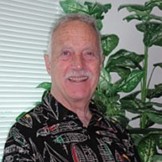
After earning an A. B. (1951) degree in chemistry from Harvard and a Ph. D. (1954) in physical chemistry from Berkeley, Frank served as an Instructor in Chemistry at Harvard (1953-56), an Assistant Prof. of Chemistry at Berkeley (1956-59), and an Assistant and Associate Professor of Chemistry at Stanford (1959-1968) before joining the University of Utah Chemistry and Physics Faculties in 1969 where he also served as Dean of the College of Science (1973-75). From 1998 on he was also a Resident Adjunct Professor in the Quantum Theory Project at the University of Florida.
During 1953-54, Frank had a productive collaboration with Berni Alder with whom he published several papers on dielectric theory, and a bit later in the 1950s, he collaborated with Stuart Rice on the statistical mechanics of polyelectrolytes. In 1963, one of his earliest Ph.D. students, the late Howard Taylor, joined Frank’s team to pioneer early studies of applying quantum chemistry to small molecules, atoms, and ions. Also in this timeframe, Harvey Michaels joined Frank and had a collaboration on electronic structure and electron scattering that spanned several years. During his time at Stanford, his Ph. D. student H. F. (Fritz) Schaefer worked with Frank to make numerous widely recognized advances in the methodology of wave function methods and their applications to especially challenging chemical problems, including some of the earliest high-quality studies of anions.
The move to Utah brought H. J. (Henk) Monkhorst to the team and the two of them expanded Frank’s impact into the application of modern electronic structure theory to the study of solids and to the development of the now highly popular coupled-cluster method. His collaboration with Monkhorst spanned many years and produced much pioneering work. In his early years in Utah, Frank’s presence along with Henry Eyring enhanced Utah’s stature in theoretical chemistry which played a key role in attracting Josef Michl, who initially served as a postdoc with Frank, and Jack Simons to the Utah Chemistry faculty. Throughout the 1970s, 1980s, and 1990s, Frank had a very large number of collaborators (Randic, Zivkovic, Trinajstic, Rein, Trautwein, Delhalle, Jeziorski, Oddershede, and more) from numerous European and Scandinavian nations and expanded his work on solids to include polymers and other extended systems. In 1992, he, Dave Freeman, and Henk Monkhorst published a book summarizing much of the work to date on the coupled-cluster method and related tools (Algebraic and Diagrammatic Methods in Many-Fermion Theory, F. E. Harris, H. J. Monkhorst & D. L. Freeman (Oxford University Press, 1992)).
Throughout his career, Frank made several seminal contributions to the mathematical tools used to evaluate integrals and other quantities used in quantum chemistry calculations, and, in later decades his work focused more on such topics. Students of mathematical physics will know of his 2013 book Mathematical Methods for Physicists, Seventh Ed. with Arfken and Weber (ISBN: 978-0-12-384654-9) which illustrates the breadth and depth of Frank’s mastery of this field.
Frank Harris was a scholar of the highest intellect who contributed much to the discipline of theoretical chemistry.
Frank E. Harris passed away on March 9, 2023.
